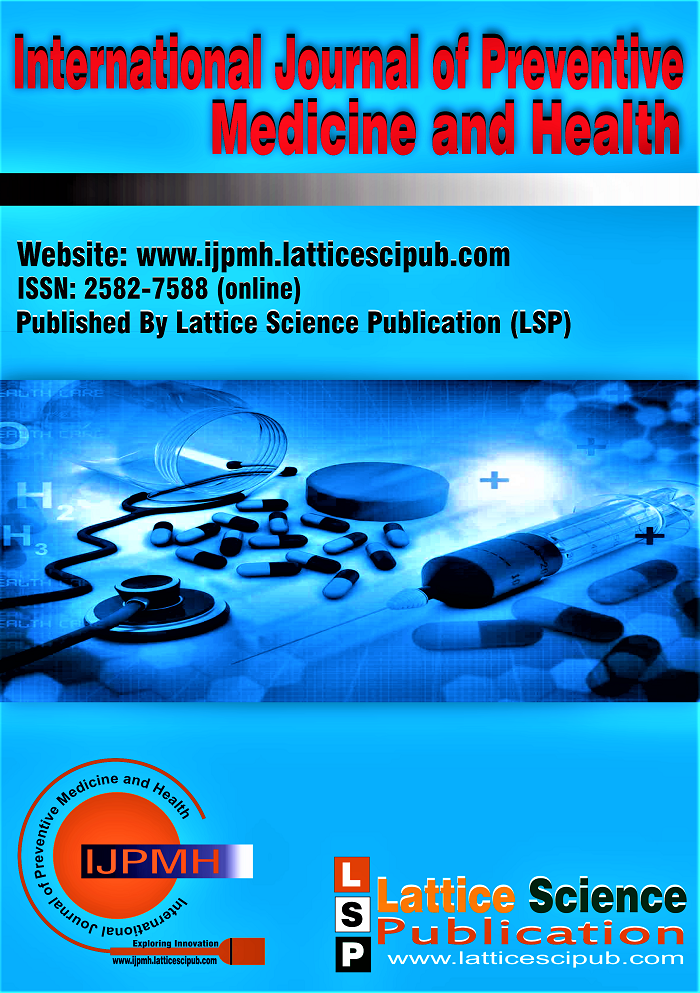Exploring Traumatic Stress, Hope, Happiness, Resilience Among Palliative/Terminal Care & Neonate/Paediatric Care Nurses
Main Article Content
Abstract
The present study was conducted to examine different psychological variables of female nurses working in Palliative and Neonatal care units across Government and Private hospitals in Delhi NCR, Karnataka, West Bengal, and Rajasthan states in India. The objective of the study to address significant gaps in the research by exploring the differences in experiences and psychological well-being amongst these healthcare professionals. The study compared the levels of traumatic stress, coping with grief, happiness, hope, and resilience between two groups of nurses, Palliative Care and Neonate Care. The results of the Independent-Samples Mann-Whitney U Test showed that there was no significant difference between the two groups in terms of their scores on any of the variables. Hope and resilience had a strong positive correlation with each other. However, most of the correlations were not statistically significant, indicating that there is no significant relationship between the dependent variables in this study. Overall, the results suggest that there is no significant difference between the perceptions of Palliative Care and Neonate Care nurses in terms of their coping with grief, hope, happiness, resilience, and traumatic stress, and there is no significant relationship between these variables. The findings of this study may provide crucial insights into the unique challenges that nurses working in specialized care settings face, including exposure to traumatic events and death and how their individual resources are allowing to deal with it. This knowledge can inform targeted interventions and support strategies to enhance their resilience and overall well-being. Ultimately, understanding the psychological well-being of these healthcare professionals is critical in ensuring they receive the necessary support and resources to cope with the demands of their job.
Downloads
Article Details

This work is licensed under a Creative Commons Attribution-NonCommercial-NoDerivatives 4.0 International License.
How to Cite
References
Australian Commission on Safety and Quality in Health Care. National Consensus Statement: Essential Elements for Safe and High-Quality End-of-Life Care. Sydney: ACSQHC; 2015. [Google Scholar] [Google Scholar] - Google Search, 2015 APA PsycNet. (2023). Apa.org. https://psycnet.apa.org/record/2011-24010-010
Bradley, E. H., Cherlin, E., McCorkle, R., Fried, T. R., Kasl, S. V., Cicchetti, D. V., Johnson Hurzeler, R., & Horwitz, S. M. (2001). Nurses’ use of palliative care practices in the acute care setting. 17(1), 14–22. DOI: https://doi.org/10.1053/jpnu.2001.20255
Epstein, E. E. (2010). Moral obligations of nurses and physicians in neonatal end-of-life care. 17(5), 577–589. DOI: https://doi.org/10.1177/0969733010373009
Felman, A. (2022, June 17). What is mental health? Medicalnewstoday.com; Medical News Today. https://www.medicalnewstoday.com/articles/154543
Jónína Einarsdóttir. (2012). Happiness in the neonatal intensive care unit: Merits of ethnographic fieldwork. 7(1), 19699–19699. DOI: https://doi.org/10.3402/qhw.v7i0.19699
Kain, V. (2006). Palliative Care Delivery in the NICU: What Barriers Do Neonatal Nurses Face? 25(6), 387–392. DOI: https://doi.org/10.1891/0730-0832.25.6.387
Louise Audrey Peters, Cant, R., Kenneth John Sellick, Margaret Mary O'Connor, Shin, S., Burney, S., & Karimi, L. (2012). Is work stress in palliative care nurses a cause for concern? A literature review. 18(11), 561–567. DOI: https://doi.org/10.12968/ijpn.2012.18.11.561
Maddocks, I., & Rayner, R. G. (2003). Issues in palliative care for Indigenous communities. 179(S6). DOI: https://doi.org/10.5694/j.1326-5377.2003.tb05570.x
Meier, D. E., Back, A. L., & Morrison, R. J. (2001). The Inner Life of Physicians and Care of the Seriously Ill. 286(23), 3007–3007. https://doi.org/10.1001/jama.286.23.3007
Mendel, T. R. (2014). The use of neonatal palliative care: Reducing moral distress in NICU nurses. 20(6), 290–293. DOI: https://doi.org/10.1016/j.jnn.2014.03.004
Peng, N.-H. (2013). To Explore the Neonatal Nurses’ Beliefs and Attitudes Towards Caring for Dying Neonates in Taiwan. 17(10), 1793–1801. DOI: https://doi.org/10.1007/s10995-012-1199-0
Sinclair, S. (2011). Impact of death and dying on the personal lives and practices of palliative and hospice care professionals. 183(2), 180–187. DOI: https://doi.org/10.1503/cmaj.100511
Singh, J., Lantos, J. D., & Meadow, W. (2004). End-of-Life After Birth: Death and Dying in a Neonatal Intensive Care Unit. 114(6), 1620–1626. DOI: https://doi.org/10.1542/peds.2004-0447
Smart, D., English, A., Jennifer Hauver James, Wilson, M., Daratha, K. B., Childers, B., & Magera, C. (2014). Compassion fatigue and satisfaction: A cross-sectional survey among US healthcare workers. 16(1), 3–10. DOI: https://doi.org/10.1111/nhs.12068
S. Uthaya, Mancini, A., Beardsley, C., Wood, D., R. Ranmal, & Modi, N. (2014). Managing palliation in the neonatal unit. Archives of Disease in Childhood: Fetal and Neonatal Edition; https://www.semanticscholar.org/paper/Managing-palliation-in-the-neonatal-unit-Uthaya Mancini/a6b111ca5a5dac6a0e3945f412f0335e53d146b0
Schroeder, K., & Lorenz, K. A. (2017). Nursing and the future of palliative care. 5(1), 4–8. DOI: https://doi.org/10.4103/apjon.apjon_43_17
Tema, T., & Asres, T. (n.d.). LECTURE NOTES Pediatric Nursing and Health Care. https://www.cartercenter.org/resources/pdfs/health/ephti/library/lecture_notes/nursing_students/LN_Pediatrics_final.pdf
Walther, F. J. (2005). Withholding treatment, withdrawing treatment, and palliative care in the neonatal intensive care unit. 81(12), 965–972. DOI: https://doi.org/10.1016/j.earlhumdev.2005.10.004
Zhong, Y., Black, B., Kain, V. J., & Song, Y. (2022). Facilitators and Barriers Affecting Implementation of Neonatal Palliative Care by Nurses in Mainland China. 10. DOI: https://doi.org/10.3389/fped.2022.887711
Gupta, D., Markale, A., & Kulkarni, R. (2021). Mental Health Quantifier. In International Journal of Engineering and Advanced Technology (Vol. 10, Issue 5, pp. 187–190). DOI: https://doi.org/10.35940/ijeat.E2694.0610521
Dahlan Abdul Ghani, Nur Adila Binti Muhd Affendy, Mental Health: Promoting Awareness Through 3D Animated Short Film. (2019). In International Journal of Innovative Technology and Exploring Engineering (Vol. 8, Issue 11S2, pp. 219–229). DOI: https://doi.org/10.35940/ijitee.K1034.09811S219
Malvika Singh, Kaveri Devi Mishra, Applications of Virtual Reality in Mental Health. (2019). In International Journal of Recent Technology and Engineering (Vol. 8, Issue 2S11, pp. 3735–3739). DOI: https://doi.org/10.35940/ijrte.B1481.0982S1119





